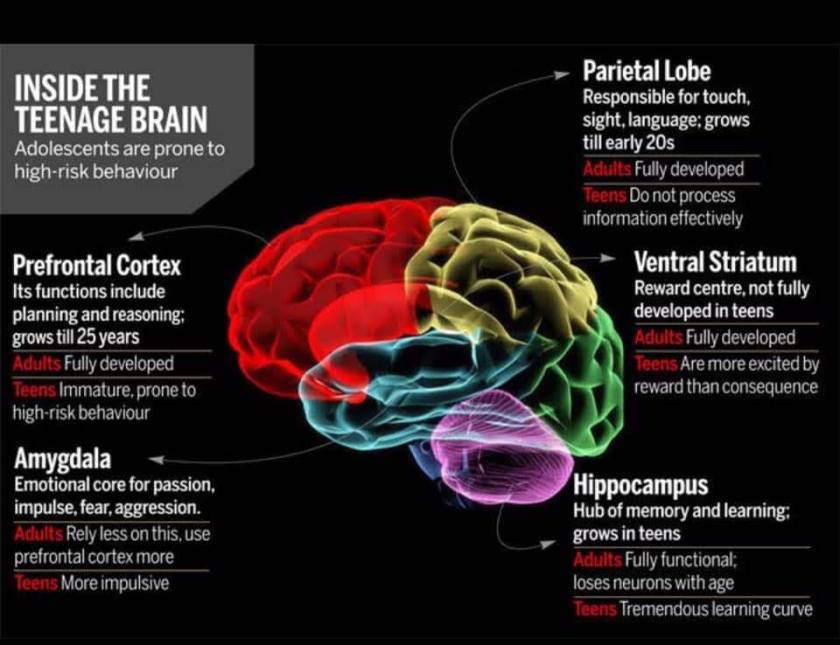Some Basic History About Anxiety
Biology and Neurology
When something excites your Body and Brain you begin to Think, Feel, and Act

- It’s a well-known fact that the brain is dependent on experience for developing a way to interact with the environment.
- At birth, you arrived with a genetic program and a central nervous system.
- Then you observed an experienced caregiver who modeled ways of reacting to stress.
- So do baby monkeys – John Bowlby used baby monkeys to show that animals need other animals to learn and feel safe in order to survive.
- The need for another animal guide is also necessary for human brain development.
You need people and experiences to learn how to adapt and cope with the world around you. According to research by Nobel Prize recipients, Eric Kandel and Elizabeth Gould, new synaptic connections in the brain are lost due to prolonged stress and can regenerate over time. Thousands of experiences occur from birth to around age 2 ½ years old. The longer a certain physical reaction is experienced the deeper it is in the brain system so you can react again the same way without so much thinking. This saves energy. But the reaction isn’t stuck there forever. Research over the past fifteen years shows that the brain remains flexible and can change at any age not just during childhood and adolescence. Your brain is like a clay sculpture that can continue to be molded and change.
Watch this cool video on how we all learn behaviors
- The brain is a lot like a band that has to find a way to play music together.
- There are solos for specific instruments but mostly the group interacts to create the resulting sound.
- The Fantastic Elastic Brain is not the name of a band, but it should be.
- It’s a great band and the music is cool but sometimes anxiety comes onstage with them and the music completely changes.
- In fact it can sound really awful. As a teen you currently have a super Elastic brain!
- Even under stress you can change your reactions.
- The changes that are happening now will inform the rest of your life; emotionally, intellectually, physically and behaviorally.
- So when you are triggered by stress you want to explore ways that work to stay in harmony and tempo with the rest of the band.
HERE’s THE FACTS
- Your brain is constantly interacting with the environment.
- The more experiences of high anxiety and unresolved anxiety which occur, the more the same stress reaction will be used over the next many years.
- Practicing the wrong music doesn’t make it sound better.
- We have to add something to the name of the band:
- Fantastic Flexible -Absorbent Brain.
- Not a catchy name but an important mechanism.
- The adolescent brain is affected more by what is going on around it than the adult brain.
- For example adolescent brains respond more intensely to nicotine. In an experiment with adolescent rats exposed to nicotine, the number of nicotine receptors in their brains increased twice as much compared to adult rats. “The adolescent brain gets a lot more bang for the buck,” says Theodore Slotkin, one of the scientists who performed the research at Duke University.
- The front part of the brain is involved in judgment, organization, planning, strategizing, and attention.
- It peaks at about age 11 in girls and age 12 in boys.
- After that peak, the gray matter thins out and only the useful and relevant connections are retained.
- Those cells and connections that are used will survive and flourish.
- The skills gained in these years can become skills for life.
- Also the conflicts which remain unsettled in this period can affect your reactions to stress for life. So if you are practicing music, or sports, or academics, those are connections that can become permanent.
- If you practice good coping skills with stress these will be available for life, since we absorb experiences for future use.
- Some experiences are especially sticky for people and hamsters.
- Craig Ferris studies golden hamsters at the University of Massachusetts Medical Center in Worcester.
- Ferris’ experiments show that a golden hamster’s experiences during the pup stage of development will set the pattern of how it behaves for the rest of its life.
- A young golden hamster put in a cage with an aggressive adult for an hour each day, will grow up to become a bully to smaller hamsters.
- But it will cower in fear around hamsters its own size.
- Some types of behavior are learned and these can stick with just an hour of experience each day!
- We are changing the name of the band again to Fantastic Fast Elastic Brain.
- Better name and pretty cool.
- According to Dr. Sowell and his research team (1999) the speed of neural information in the frontal cortex should increase throughout childhood and adolescence and leads to increased neural efficiency.
What do I do to be ELASTIC, absorbent, and fast?
New experiences can provide ‘turning- point’ effects.
However, each experience alone is not enough – you also need the Meaning of the experience as the key to how you react under stress.
- For example, A dog tries to bite you when you are two years old; your mother screams – you scream and are upset every time you see a dog for the rest of your life! You learned mom’s reaction.
- The brain learned Dog = bite/pain/scream. That is an associated meaning.
- Now as a teenager when you see a dog your central nervous system cues that same response.
- Associative meaning is a simple recipe: THIS is THAT.
Learned response:
THIS = Do THAT
Same Response in the present:
When THIS happens – Do THAT.
The brain is a fast, super absorbent, mechanism that can grab and hold on to information.Other times it may let the same information slip away.
Today you can separate out this from that.
- Hold up your left hand: THAT happened when you were 6 years old. Hold up your right hand THIS just happened now.
- Put your right hand on top of your left hand.
- Your brain puts this together instantly.
- Now take the hands apart and look at your right hand – THIS is not THAT.
- Knowing how to see the difference is the beginning of more conscious choices of behavior with your current stress.
- The next move is to create a new response to the current trigger for stress.
New response:
When THIS happens =
STOP – face the fear, confusion or uncertainty and make time for something new to happen between the first response and the usual reaction.
- The band has to stop for a minute so we can change the music.
- Other people‟s negative and positive reactions influence the impact of situations.
- If a critic says they don’t like your music you don‟t change the music.
- You think and have feelings about what was said as a reflection of the music and that person.
- If you don’t like the music you are playing then you think about how to change it for yourself.
- If a critic tells you something that makes sense with your own experience of the music then you change it because it makes sense from an external and internal view.
- Social skills such as understanding the ideas and actions of other people and connecting actions to a cause are super important in middle school and high school.
- A psychiatrist from the Child and Adolescent Brain Institute says that you develop a Theory of Mind of self and others after observing behavior.
- In other words; I do that because I… and, they do that because they think, they know, or they feel, etc…
- We guess why other people act the way they do and we guess what other people’s brains are thinking.
- Just for today as you walk down the hallway at school or the street afterwards look at other people and make a guess about their thoughts.
- We may have good guesses why they do things because we know them and their abilities and actions over time.
- They did that because that is what they always do.
- Social interactions play a large role in teen years.
- You learn from your own experiences and watching other people then you choose your behavior.
- Other people‟s minds work the same way.
- We, see and do as an experiment for a long time as little kids and this process continues for life.
- This is called social cognition – in other words, you think about how to behave around other people differently than you do when you are alone.
- You are a social being – so are most other animals.
- Example of Social cognition:
- Some people think that vaping is stupid –
- Some think that vaping is cool.
- Your family may think vaping is not cool, but your friends may think that it is… what do you think?
- You have to make a decision about vaping or keep two ideas about vaping in mind – I want to vape with my friends – I don‟t vape at home.
- You think about it in more than one way depending on who is around – this is social cognition.
- Your actions are different around different people and you may have anxiety about the differences.
- What do I know about me and what do they think of me?
- I have to choose between what I think they think about me and what I feel/think/ know about me.
- My behavior can’t be customized to who is around or I won’t feel like me in a continuous way.
- If I don’t like to vape but I know that they think it’s cool then I still don’t vape.
- Your brain likes to have choices but not conflict.
- If a behavioral reaction doesn’t get resolved into a healthy adaptive response it can be a recipe for conflict.
- This happens in the prefrontal cortex which is the front part of your brain above and behind your nose, as you try to choose a model for behavior.
- So finally the name of our brain band is still too long and really bad:
- Super Fast Elastic- Absorbent Social Band.
OK this won’t get a lot of fans interested but your own music will sound a lot better as you rehearse resolving anxiety.
- Super Fast Elastic- Absorbent Social Band.
